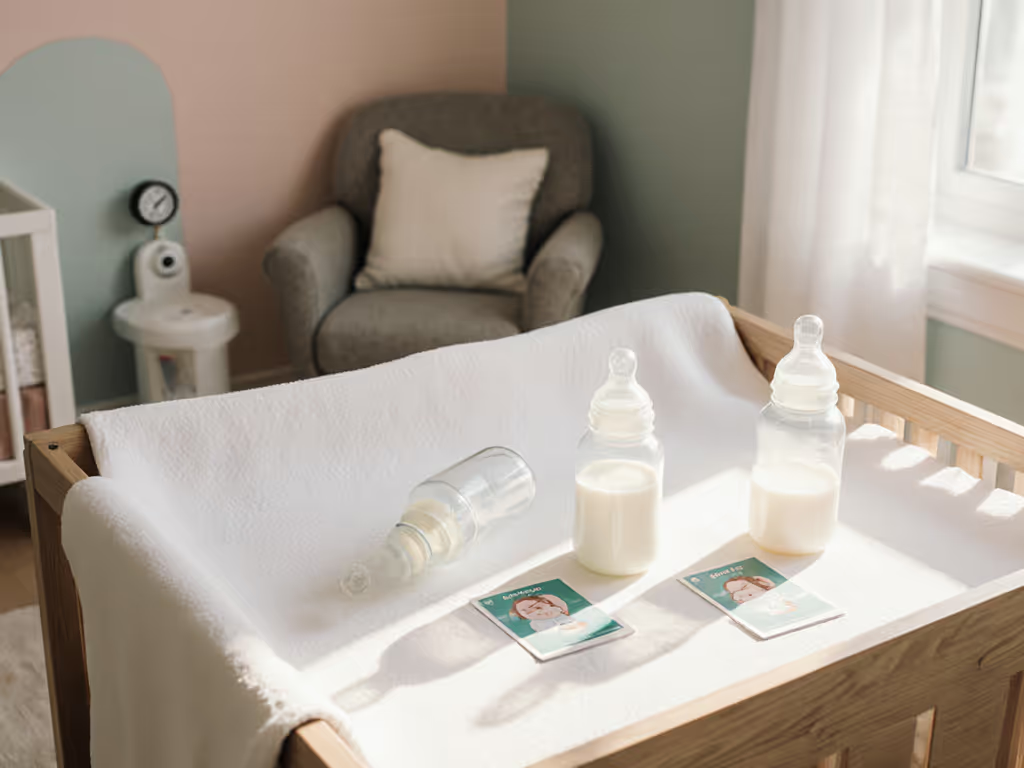
Bottle Compatibility: Everything You Need to Know
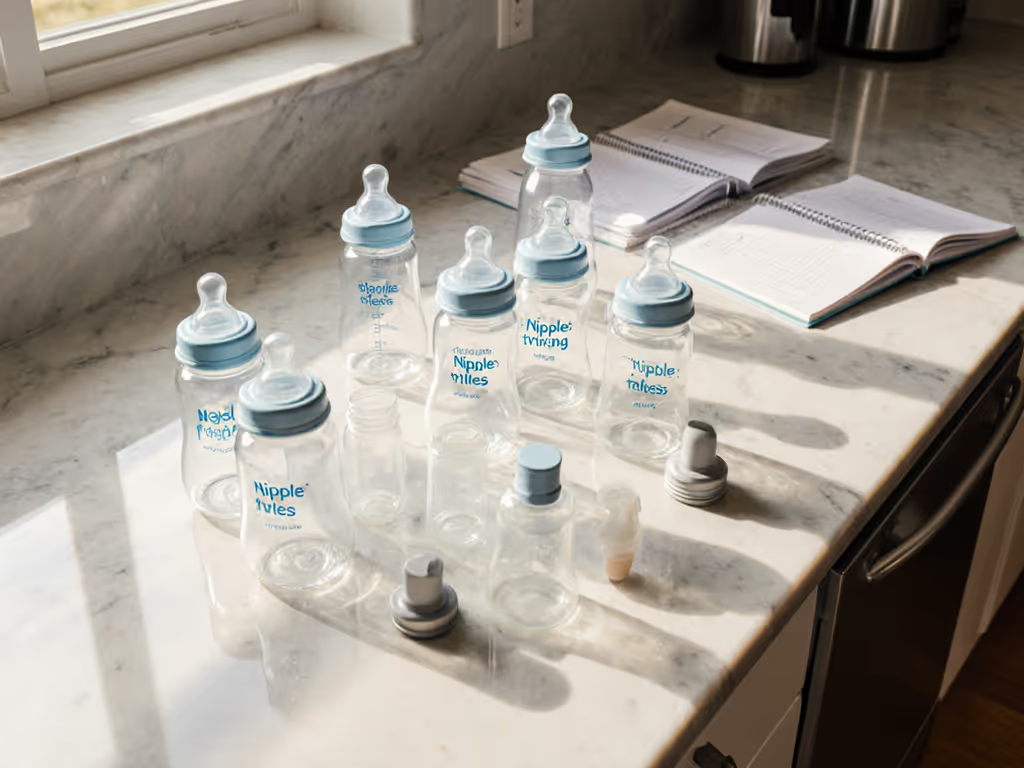
Did you know that more than 80 percent of parents have experienced issues caused by mismatched bottle parts during feeding? Choosing the right bottle system goes beyond convenience. It can mean the difference between a calm, nourished baby and one struggling with leaks, gas, or even discomfort. Understanding bottle compatibility helps you sidestep hidden risks and create safer, more satisfying feeding moments for your child.
Key Takeaways
| Point | Details |
|---|---|
| Bottle Compatibility is Crucial | Ensuring that all components of a baby bottle system work together safely is vital for protecting your baby's health and feeding experience. |
| Material and Mechanical Compatibility Matters | Selecting compatible materials and ensuring proper alignment of bottle parts prevents issues like leakage, inconsistent flow, and potential chemical contamination. |
| Regular Evaluation is Essential | Parents should routinely inspect bottle components for wear and ensure that they match the baby's developmental needs, adjusting as necessary. |
| Informed Choices Enhance Safety | Understanding the interactions between different components leads to informed selections that support safe, efficient feeding. |
Defining Bottle Compatibility And Its Importance
When it comes to feeding your baby, bottle compatibility is far more than just a technical term. It represents a critical safety consideration that directly impacts your infant's health and feeding experience. Simply put, bottle compatibility means ensuring that all components of a baby bottle system work seamlessly together without compromising the quality of your baby's nutrition or introducing potential risks.
At its core, bottle compatibility involves several key dimensions. Chemical compatibility is perhaps the most crucial, focusing on how bottle materials interact with liquids. Different materials like glass, plastic, and silicone must remain stable and inert when in contact with milk, formula, or other feeding substances. The wrong material could potentially leach harmful chemicals or degrade, creating microscopic particles that contaminate your baby's feed. Think of it like a precise scientific puzzle where every piece must fit perfectly to protect your little one.
The implications of bottle compatibility extend far beyond material safety. Mechanical compatibility matters just as much, involving how different bottle parts like nipples, rings, and caps interact. A mismatched nipple flow rate, an improperly sealed lid, or an incompatible bottle design can lead to challenges like:
- Increased air intake during feeding
- Potential leakage
- Difficulty for the baby in extracting milk
- Inconsistent feeding experiences
Understanding these nuances helps parents make informed decisions. It's not just about picking a random bottle off the shelf, but carefully selecting a comprehensive feeding system that supports your baby's unique nutritional needs and comfort. By prioritizing bottle compatibility, you're taking a proactive step in ensuring safe, efficient, and stress-free feeding sessions.
Types Of Baby Bottles And Components
Navigating the world of baby bottles can feel like solving a complex puzzle. Baby bottle systems are intricate networks of components designed to deliver nutrition safely and comfortably. Understanding the various types and their unique characteristics is crucial for parents seeking the perfect feeding solution for their infant.
Primary bottle materials offer distinct advantages and challenges. Glass bottles provide excellent durability and chemical stability but are heavier and more fragile. Plastic bottles are lightweight and affordable, though parents should carefully select BPA-free options. Silicone bottles represent a newer innovation, offering flexibility, durability, and hypoallergenic properties. Stainless steel bottles emerge as a premium option, providing exceptional temperature retention and resistance to bacterial growth.
Here's a comparison of major baby bottle materials and their characteristics:
| Material | Pros | Cons |
|---|---|---|
| Glass | Chemically stable<br>Durable<br>Easy to clean | Heavy<br>Breakable |
| Plastic (BPA-free) | Lightweight<br>Affordable<br>Shatter-resistant | Can scratch easily<br>Needs replacing more often |
| Silicone | Flexible<br>Hypoallergenic<br>Durable | Can be harder to find<br>Usually pricier |
| Stainless Steel | Excellent temperature retention<br>Resistant to bacteria<br>Highly durable | Expensive<br>Opaque—can't see liquid level |
Each baby bottle system typically comprises several critical components:
- Bottle Body: The main container holding milk or formula
- Nipple/Teat: The crucial interface allowing babies to feed
- Collar/Ring: Secures the nipple to the bottle
- Cap: Protects the nipple and maintains hygiene
Nipple variations play a significant role in bottle compatibility and infant feeding experience. They differ across multiple dimensions:
- Material: Latex (softer) or silicone (more durable)
- Shape: Traditional, orthodontic, or wide-neck designs
- Flow Rate: Slow, medium, or fast, matched to baby's age and feeding capabilities
Choosing the right bottle involves understanding your baby's unique preferences and developmental stage.
![]() What works perfectly for one infant might not suit another.
What works perfectly for one infant might not suit another.
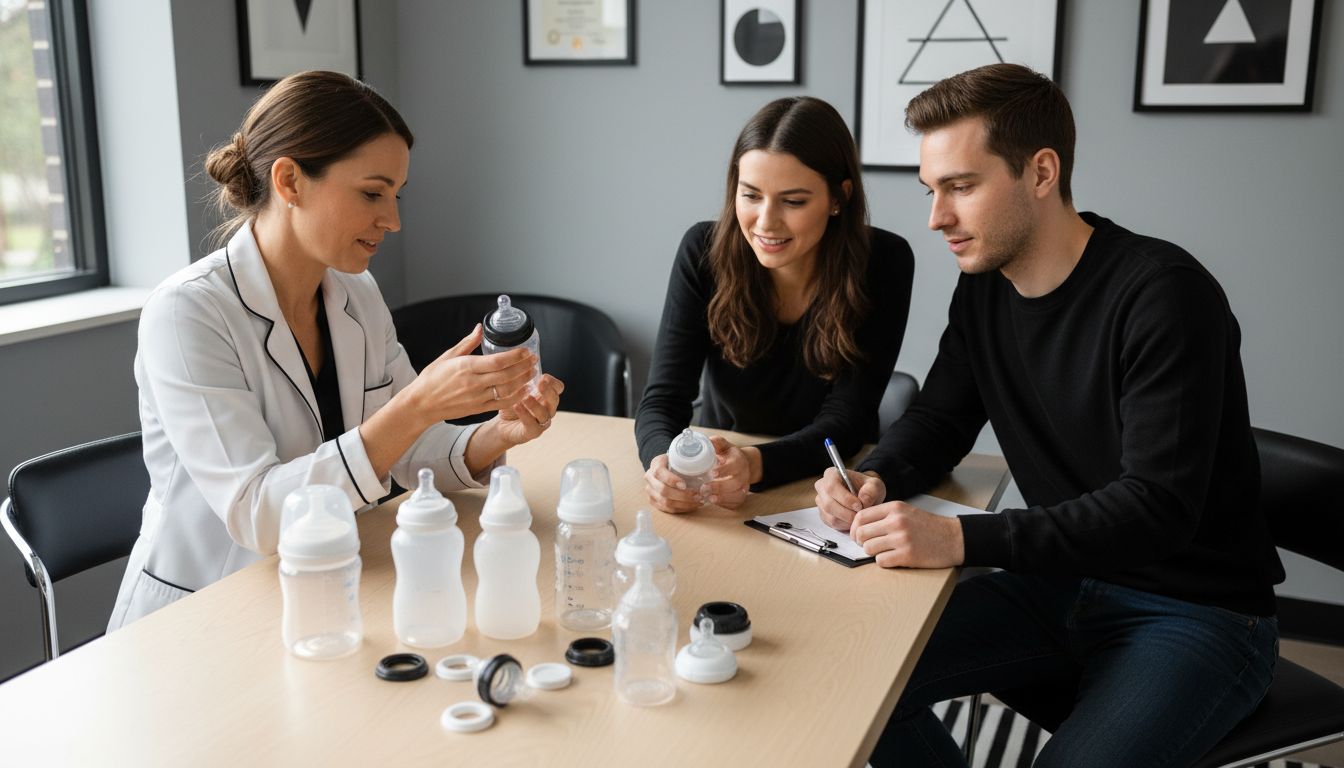 Experimentation, patience, and careful observation are key to finding the ideal bottle system that ensures comfortable, efficient feeding.
Experimentation, patience, and careful observation are key to finding the ideal bottle system that ensures comfortable, efficient feeding.
How Compatibility Affects Feeding Safety
Feeding safety isn't just about what goes into the bottle, but how the entire bottle system functions. Compatibility serves as a critical shield protecting your infant from potential feeding-related complications that could compromise their health and comfort. When bottle components work harmoniously, they create a safe, predictable feeding environment that supports your baby's nutritional intake and overall well-being.
The risks of incompatible feeding gear can be surprisingly nuanced. Mechanical misalignment between bottle parts can trigger a cascade of potential issues. Improperly fitted nipples might create irregular milk flow, causing your baby to struggle while feeding. This struggle can lead to increased air intake, potentially resulting in uncomfortable conditions like gas, colic, or reflux.
Imagine trying to drink from a straw that randomly changes diameter - frustrating and inefficient, right? That's precisely the challenge an infant faces with incompatible bottle components.
Safety concerns extend beyond mechanical interactions into material integrity. Chemical compatibility plays a crucial role in preventing potential contamination. Different bottle materials interact uniquely with liquids, and the wrong combination could potentially:
- Leach harmful chemicals into milk or formula
- Degrade faster under temperature changes
- Create microscopic particles that mix with the feed
- Alter the nutritional quality of the liquid
Making informed choices about bottle compatibility isn't just a technical exercise - it's an essential aspect of parental care. By understanding how different components interact and selecting systems designed with safety in mind, you're taking proactive steps to protect your infant's health. Remember, every small detail matters when it comes to your baby's nutrition and comfort.
Risks Of Mismatched Bottles And Nipples
Every parent wants smooth, stress-free feeding sessions, but mismatched bottles and nipples can transform this simple act into a challenging ordeal. The wrong combination isn't just an inconvenience - it can create serious feeding complications that impact your baby's comfort, nutrition, and overall well-being. Understanding these risks is crucial for creating a safe, efficient feeding environment.
Mechanical incompatibility represents the most immediate concern with mismatched components. Nipples that don't align correctly with bottle designs can create unpredictable milk flow rates, turning feeding into a frustrating experience. Imagine a nipple that releases milk too quickly, overwhelming your baby, or one that's too slow, causing them to work exhaustingly hard just to get a few drops. These scenarios can lead to significant feeding challenges, including:
- Increased air intake during feeding
- Potential choking or coughing
- Excessive stress during meal times
- Disrupted feeding rhythms
Beyond mechanical issues, material mismatement introduces more subtle but potentially dangerous risks. Different bottle and nipple materials might interact unexpectedly, potentially compromising the feeding system's integrity. Some combinations could:
- Accelerate material degradation
- Create microscopic particles
- Alter milk or formula temperature retention
- Compromise seal and prevent proper hygiene
Navigating these risks requires careful, informed selection. By understanding how different bottle components interact and prioritizing compatibility, parents can create a safer, more comfortable feeding experience that supports their infant's nutritional needs and developmental well-being.
Tips For Ensuring Safe Bottle Compatibility
Ensuring bottle compatibility is an art form that requires careful attention, thoughtful selection, and ongoing maintenance. Parents aren't just choosing feeding equipment - they're creating a safe nutritional ecosystem for their infant. The right approach can transform potentially stressful feeding sessions into smooth, comfortable experiences that support your baby's growth and development.
Material matching forms the foundation of bottle compatibility. Not all bottle components are created equal, and understanding how different materials interact is crucial. When selecting bottles and nipples, consider these key compatibility factors:
- Choose components from the same manufacturer or explicitly designed to work together
- Verify material consistency (silicone with silicone, latex with latex)
- Check for BPA-free certifications
- Ensure no visible cracks, wear, or degradation
Beyond material selection, functional compatibility demands a systematic approach. This means regularly evaluating your bottle system's performance and being willing to make adjustments. Practical strategies include:
- Matching nipple flow rates to your baby's age and feeding abilities
- Checking seal tightness before each feeding
- Inspecting components for subtle signs of wear
- Replacing parts at recommended intervals
The most effective compatibility strategy involves ongoing observation and adaptation. Watch your baby's feeding cues, monitor their comfort, and be prepared to experiment. What works perfectly today might need adjustment as your infant grows. By treating bottle compatibility as a dynamic, evolving process, you'll create a feeding environment that supports your baby's nutritional needs and comfort.
Take Control of Your Baby's Feeding Safety and Comfort
Understanding the importance of bottle compatibility goes beyond just picking any baby bottle. The article highlights common challenges like mismatched nipples causing air intake issues, improper milk flow, and potential chemical risks from incompatible materials. If you are worried about leaks, nipple confusion, or uncomfortable feeding sessions for your baby, you are not alone. Every parent wants a safe, calm, and effective feeding experience that supports their little one’s growth.
At Family Bottle Fit, we specialize in guiding parents through the complexities of bottle compatibility. Our in-depth resources cover everything from matching nipple flow rates and materials to selecting bottle systems that work perfectly together. Discover practical strategies with easy at-home checks and expert-reviewed tips to prevent feeding problems before they start. Take the first step toward stress-free feedings by exploring our comprehensive feeding guides and comparison tools. Don’t wait until frustration builds—visit us now at Family Bottle Fit and give your baby the comfortable, safe feeding experience they deserve.
Frequently Asked Questions
What is bottle compatibility and why is it important?
Bottle compatibility ensures that all components of a baby bottle work together safely without compromising the quality of the baby's nutrition. It is crucial for preventing issues like contamination and feeding complications.
How do different materials impact bottle compatibility?
Different materials (glass, plastic, silicone, stainless steel) have unique properties that affect their chemical stability and durability. Understanding these differences helps in selecting the right bottle for your baby’s needs.
What are the risks associated with mismatched bottles and nipples?
Mismatched bottles and nipples can cause issues like irregular milk flow, increased air intake, choking hazards, and compromised hygiene. This can lead to discomfort and feeding challenges for infants.
How can I ensure my baby’s bottle components are compatible?
To ensure compatibility, choose components from the same manufacturer, verify material consistency, check for BPA-free certifications, and inspect for visible wear or damage before each feeding.
Recommended
Related Articles

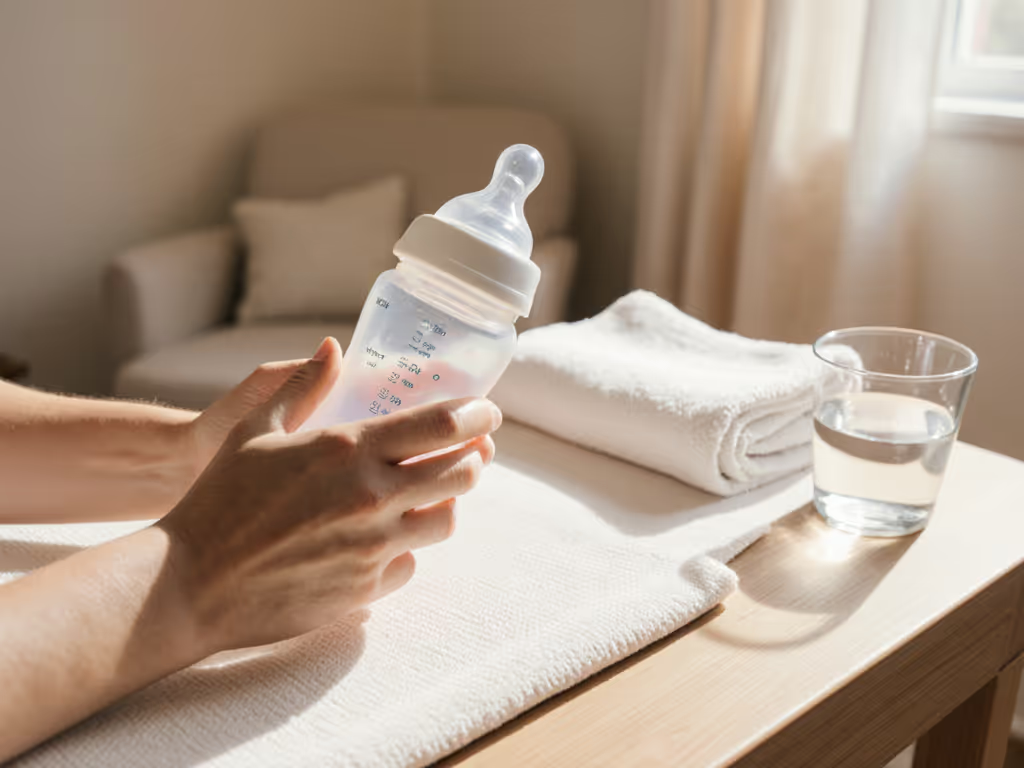
Why Slow Flow Nipples Matter: Complete Guide

Step-by-Step Guide to Preventing Nipple Confusion Easily
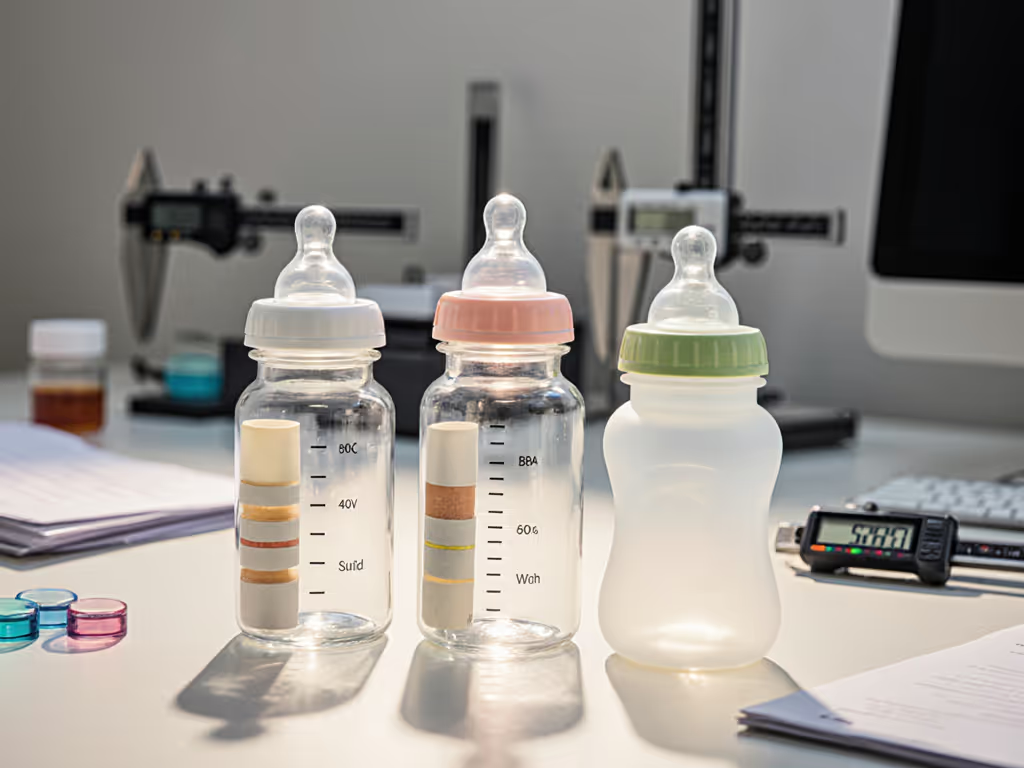
Complete Guide to the Role of Bottle Construction
